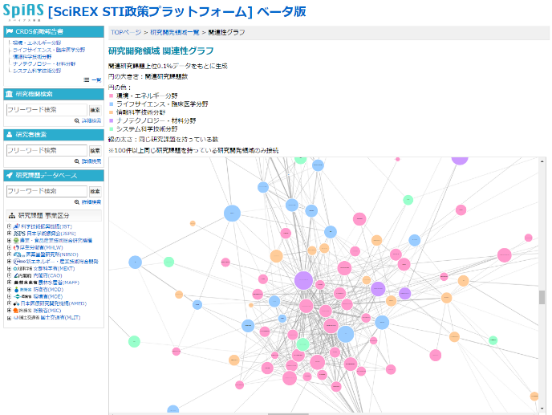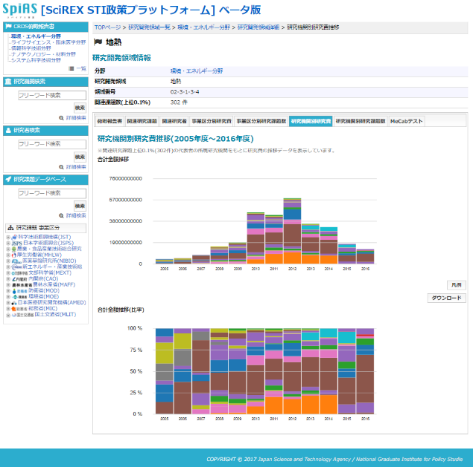Yasushi HaraBinding of Gap: Science and InnovationIntroductionHow innovation emerged from the science? What is the role of the scientist, inventor, and entrepreneur during R&D Process from the fundamental scientific discoveries to marketization? Current innovation studies mainly focus on firm’s entrepreneurial behavior and/or technological circumstances to analyze the emerging process of innovative product, but still a very few articles tackle on the issue how these innovative products created by scientific discoveries, its feasibility via bibliographic database, and the role of public innovation policy during this time-absorbing process. Literature Review on Innovation StudyAs of the scratch point, (Nagaoka et al. 2010) classifies the relationship between inputs and outputs of innovation as shown in Figure 1. Based on (Pakes and Griliches 1984), they have sorted the role of patent the proxy of firm’s knowledge stock and as the indicator of R&D Process. Following the study, enormous micro-economics flavored innovation studies and management studies are focused in to append corresponding dataset such as scientific publication database (ex. Web of Science/Scopus/Microsoft Academic Search) and patent database (ex. PatentsView/PATSTAT) (Ikeuchi et al. 2017), and any in-tangible knowledge data based on the survey data analysis (Walsh and Nagaoka, 2009). Their target is to evaluate, or, to trace the knowledge transfer process within or among the firm. Another question is the role of patenting system as the accelerator of knowledge appropriation. In this perspective, (Jaffe and de Rassenfosse 2016) summarizes the prior study of patent backward and forward citation analysis, and they have criticized forward citation is not only indicator to trace out knowledge from science to innovation.
Figure1. Inputs and Outputs of Innovation Process Source: (Nagaoka et al. 2010), modified and appended by the author Plus, (Rotolo, Hicks and Martin 2015) argues that current innovation-oriented study is mainly “using scientific publication and patent data for the operationalization of emerging technologies, and scientometrics method has focused mainly on the detection of what is merging, rather than on characterizing the potential of what is detected to be emerging.” Current mainstream patent and publication data-based innovation study has limitation in following points; In sum, data does not reflect the whole picture of scientific and innovation ecosystem, it is need ontological level representation (Datario et al. 2016). Under the findings of these previous studies, I will aim to figure out innovation process by using big data and relevant data processing analysis in specific field such as ICT Industry and Pharmaceutical/Bio Industry. Innovation Studies Under Digitalized Big Data Graph 1. Main Window of SPIAS
 Graph2. Accumulated Amount of Competitive Fund by Government in Specific Scientific Field
My Research Work is Inter Disciplinary among industrial organizational study and computer science. To analyze the knowledge flow between science and innovation in one single window to understand socio-economic dynamics of science, technology and innovation, our team have built SPIAS (SciREX Policymaking Intelligent Assistance System, https://spias.grips.ac.jp,). Graph 1. is the one of the functionality of SPIAS. In this system, it visualizes the relationship between scientific categories by using unique national language processing algorism such as fastText (Bojannowski et al. 2016) and MeCab: Yet Another Part-of-Speech and Morphological Analyzer. And in Graph 2., it indicates the detailed information of competitive fund in Japan such as KAKEN (Grants-in-Aid for Scientific Research), JST, and NEDO (New Energy and Industrial Technology Development Organization). In addition to, this data platform not only involves scientific paper and patents based on J-global (by JST) database, but also includes product information such as Press Release data (by NIKKEI, Inc.). One of main limitation of SPIAS is that covering database is mainly focus on scientific activities in Japan. To realize entire sketch of innovation activities in continuous changes of scientific trajectory, it is mandatory to append international data of patent, paper, product to make any comparative study in industry, or nation level. Hence, we aim to append international scientific paper such as Web of Science by Clarivate Analytics and patent data such as PATSTAT by EPO. Current Research TopicsOne of my current research project is to analyze star scientists in science-intensive industry. As many previous studies shows star scientist, who has high forward citation paper in certain scientific field, has a positive impact for his/her neighborhood scientists and startup company (Zucker and Darby 1998). But, most of relevant studies rely on science-intensive field and by means of scientific paper and patent data. Using SPIAS and other social impact data, I will figure out how star scientist emphasizes product development in innovation ecosystem. Another research project is to analyze the role of public funding for human iPS cells and its marketization process. After Prof. Shinya Yamanaka awarded Nobel Prize in Chemistry in 2012, Japanese government has been invented enormous public funds in human iPS cells. Under the estimation by SPIAS, Japanese government has assigned public funding for human iPS cells research around 100 million US dollar from 2012 until 2017. But most of public funding agencies in Japan had been only focused and invented in the boundary of basic science of this emerging scientific field. Because of lack of investment in applied science and marketization, most of the start-up utilizing human iPS cell technology has been established in the United States or in Europe, not in Japan. Under the data analysis based on SPIAS and other scientific database, I will aim to figure why national innovation system in Japan failed to overcome “the valley of death” and create the market for human iPS cells. Research ImplicationAs policy implication of my research, it will evaluate Science, Technology, and Innovation Policy change in Japan especially from 1990s to 2010s by means of data-driven approach and interview-based qualitative approach in parallel. And research outcomes aim to suggest that (a.) Incorporation process of National University in 2003 by National University Corporation Act (Act No. 112) has exogenous shock in the relationship of knowledge creation and transfer process in the ecosystem of science and innovation between universities and industries, and (b.) inflexibility in Governance system of public funding leads structural trap of technological development in national and industry level. ReferencesBojanowski, P., Grave, E., Joulin A., Mikolov, T. (2016) “fastText”, https://research.fb.com/fasttext/Daraio, C., Lenzerini, M., Leporelli, C., Naggar, P., Bonaccorsi, A., Bartolucci, A. (2016) "The advantages of an Ontology-Based Data Management approach: openness, interoperability and data quality", Scientometrics, 108, 1, pp.441-455. Hara, Y. (2014) "The Distance between Science and Innovation – quantitative analysis based on science linkage database", Japanese Economic Association 2014 Annual Meeting Ikeuchi, K., Motohashi, K., Tamura, R., Tsukada, N. (2017) "Measuring Science Intensity of Industry using Linked Dataset of Sciece, Technology and Industry", RIETI Discussion Paper Series 17-E-056, http://www.rieti.go.jp/jp/publications/dp/17e056.pdf Jaffe, Adam B. & de Rassenfosse G. (2016) "Patent Citation Data in Social Science Research: Overview and Best Practices", NBER Working Papers 21868, National Bureau of Economic Research, Inc. MeCab: Yet Another Part-of-Speech and Morphological Analyzer. http://taku910.github.io/mecab/ Nagaoka, S., Motohashi, K., Goto, A. (2010), “Patent Statistics as an Innovation Indicator”, in Handbook of the Economics of Innovation, vol. 2., pp.1083-1127. Packalen, M., Bhattacharya, J. (2015) "Cities and Ideas", NBER Working Paper No.20921 Pakes, A., Griliches, Z. (1984) “Patents and R&D at the Firm Level: A First Look”, in R&D, Patents, and Productivity, University of Chicago Press, pp.55-72. Rototo, D., Hick, D., Martin, B. (2015) "What Is an Emerging Technology?", Research Policy, 44(10), pp.1827-1843. Walsh, J.P., Nagaoka, S. (2009) “Who Invests?: Evidence from the Japan-U.S. Inventor Survey?”, RIETI Discussion Paper Series 09-E-034, http://www.rieti.go.jp/en/publications/summary/09070003.html Zucker, L.G., and Darby, M.R. (1998) "Capturing Technological Opportunity Via Japan’s Star Scientists: Evidence from Japanese Firms Biotech Patents and Products," NBER Working Paper No. 6360. |
 |
Recherche |  |
FFJ Research Statement |  |
Yasushi Hara |
| Inscrivez-vous à notre Lettre en cliquant ici |
*En cas de problème, vous pouvez aussi vous inscrire en envoyant un mail à sympa@ehess.fr, avec pour titre "subscribe ffj_french_news".







